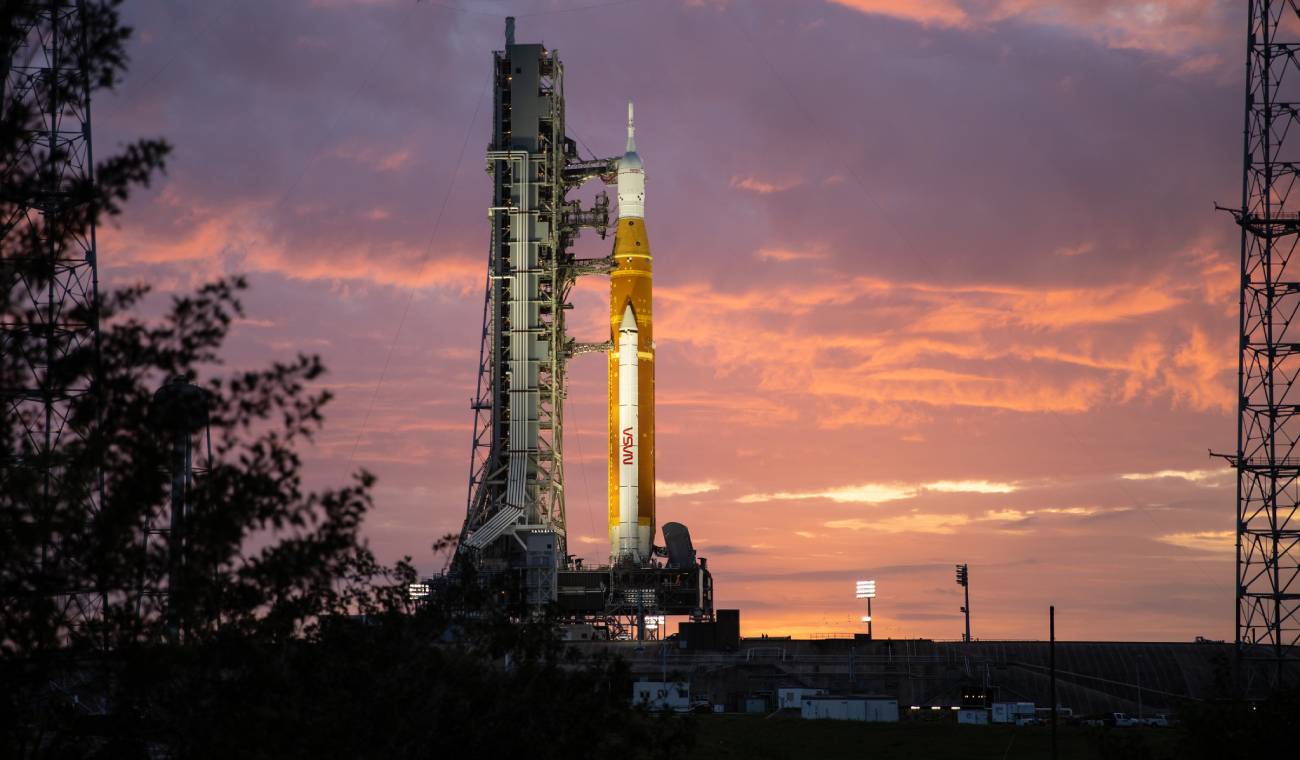The takeoff of the new moon rocket of the POT was canceled on Saturday at the last minute for the second time in a week, with no scheduled departure date, thus postponing the start of the American program Artemis to return humans to the Moon.
After a second frustrated attempt on Saturday due to a fuel leak, NASA will not try to launch its new rocket -which has no crew- in the next few days and postponed its departure even without a date, explained a person in charge of the US agency.
The release period ending on Tuesday “not under consideration”said at a press conference Jim FreeNASA associate administrator.
You may be interested in:
Fifty years after the last mission ApolloThis is the first stage of the Artemis program, which aims to establish a lasting human presence on the Moon and then allow it to be used as a stepping stone to Mars.
The launch was initially scheduled for 2:17 p.m. local time (18:17 GMT), with a two-hour window, from kennedy space centerin Florida.
But NASA teams they couldn’t fix a fuel leak during the filling of the tanks.
Shortly after 11:00 local time, launch director Charlie Blackwell-Thompson made the final decision to cancel the operation.
“The cancellation is absolutely the right decision,” astronaut Victor Glover, present at the scene, told reporters. With the repetition of these tests, which provide a better understanding of this new vehicle, “people’s confidence should increase, not decrease,” he argued.
flammable hydrogen
The orange and white SLS rocket It has been in development for more than a decade.
Shortly before 0600 local time, Blackwell-Thompson had given the go-ahead to start filling the rocket’s tanks with its cryogenic fuel: ultracold liquid hydrogen and oxygen.
However, around 07:15 a leak was detected at the foot of the rocket, in the pipe through which the highly flammable liquid hydrogen flows to the tank. The problem could not be resolved.
On Monday, a first takeoff attempt was also canceled at the last minute due to technical problems, including a leak similar to the one on Saturday, which was fixed.
six weeks in space
Artemis 1 should make it possible to verify that the orion capsulelocated at the top of the rocket, has the necessary safety conditions to transport astronauts.
With this new spacecraft, NASA hopes to relaunch distant human exploration. The Moon is a thousand times further away than the International Space Station (ISS).
It is expected that In total the trip lasts about six weeks.
Orion will venture up to 64,000 kilometers behind the Moonfarther than any other habitable spacecraft to date.
Also read:
The main objective of the Artemis 1 mission is to test the capsule heat shield.
On his return to the terrestrial atmosphere, must withstand a speed of 40,000 km/h and a temperature equivalent to half of that recorded on the surface of the sun.
The ship would have to travel about 2.1 million kilometers before falling into the Pacific Ocean.
Moon landing in 2025
NASA originally expected to launch the SLS in 2017 and will have invested more than $90 billion in its new lunar program by 2025, according to a public audit.
The name Artemis was chosen to evoke a female figure, twin sister of the Greek god Apollo, and in counterpoint to the space program that took man to the Moon with that name.
Apollo transported to the lunar surface, between 1969 and 1972, only white men and now NASA wants the first woman and first person of color to reach the Earth’s satellite.
The next mission, Artemis 2, in 2024, will carry astronauts but will not land on the moon. That honor will be reserved for the crew of Artemis 3, which will launch no sooner than 2025. After that, NASA hopes to fly roughly one mission a year.
The US agency’s plan is to build a space station in lunar orbit, called Gateway, and a base on the surface of the Moon.
NASA hopes to test the technologies needed to send the first humans to Mars there.
According to the director of the space agency, bill nelson, a round trip to Mars aboard Orion, taking several years, could be attempted in the late 1990s. 2030.
















